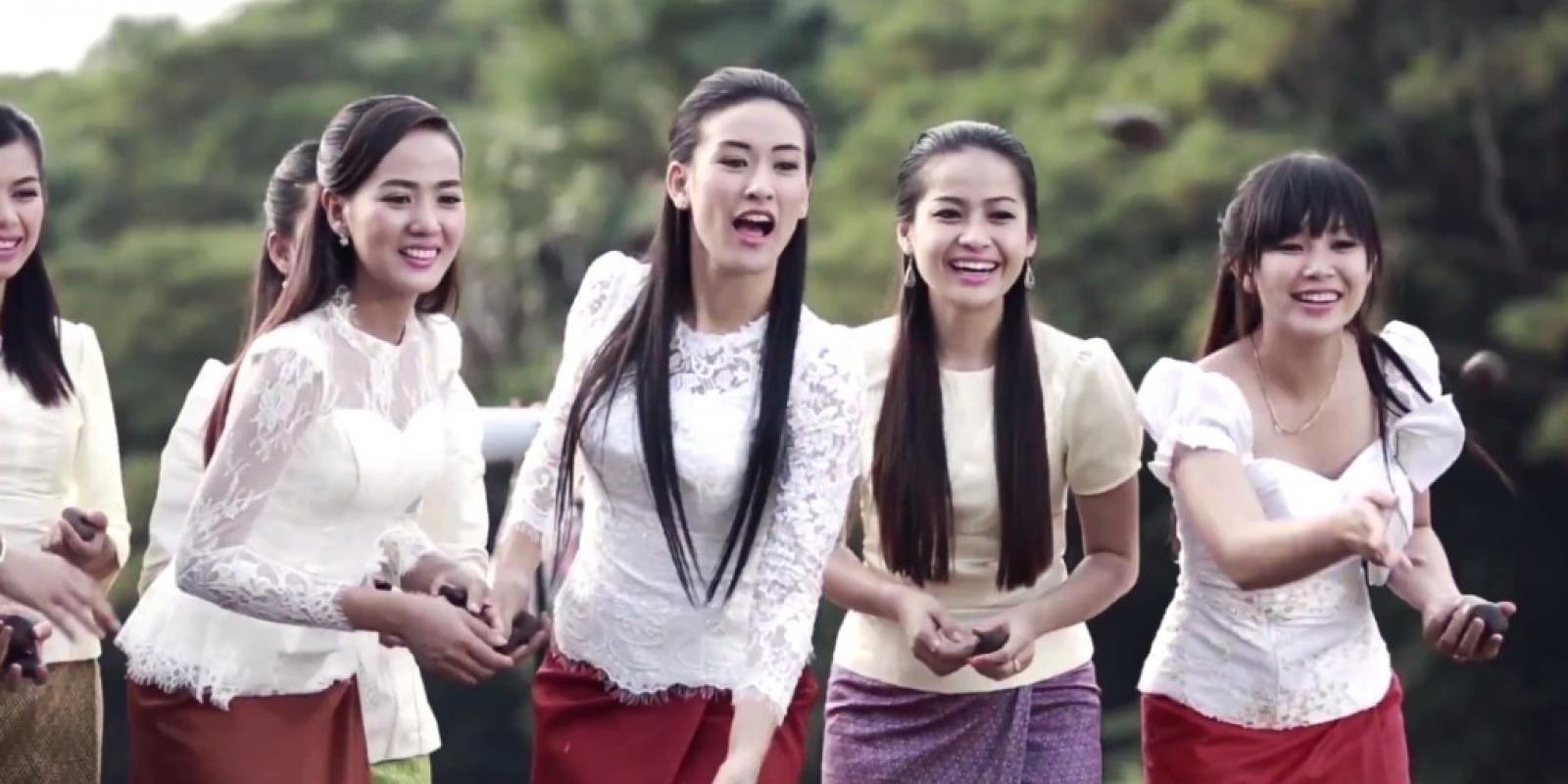If you visit Cambodia, you will find that its fashion sense is rooted in centuries-old traditions. Almost all of Cambodia’s families work in agriculture or fishing, so most of them wear comfortable and convenient outfits to be active in their daily activities. Moreover, festive dresses tend to be impressive, sparkly glamorous, and colorful. You can glance at this guidance regarding Cambodia’s traditional clothes, including various outfits suitable for every occasion.
1. Sampot
Sampot started when Chinese diplomats instructed the Cambodian king to compel his people to cover up in the Funan era. As a result, this sampot is the national clothing of Cambodia, and it dates back to that time.
It is a large and loosely-fitting layer of fabric worn around the lower half of the body between 5 and 6 feet long as a sarong. Apart from women, sampot is also a man’s traditional clothes and is still common in rural areas.
Different types of sampot need distinct methods of draping or folding the material, and it is varied due to different social statuses and the purpose of the sampot use.
2. Sampot Tep Apsara
The apsaras sculpted into the bas-reliefs at Angkor Wat’s temple wore this kind of sampot during the Angkor period. It is waist-tied and secured with a golden belt. Today, we can see the traditional Cambodian headdress in numerous apsara performances in Phnom Penh and Siem Reap, although it is no longer worn in the country.
3. Sampot Chang Kben
It is possible to create the 9-foot-long Sampot Chang Kben by making several modifications to the Sampot. The dressing is a big difference between the high-end, middle-end, and low-end people in ancient Cambodia or even now in certain nation regions.

Sampot Chang Kben is worn by wealthy and middle-class ladies, whereas lower-class women wear Sampot. The fabric is worn around the bottom half of the body, giving the impression that the wearer is wearing trousers rather than a skirt. Nowadays, we can also see the Sampot Chang Kben is only worn as traditional clothes for weddings or some special occasion, for example in the Blessing Ceremony.
In the 20th century, upper-class women reserved to wear these traditional clothes for daily life, but it has faded since then. Instead, it’s more like a pair of trousers than a skirt, with a length of more than 9 feet and a width of more than 3 feet.
When you wear this custom, make sure to wrap it around your waist and pull the rest of the clothes away from your body. After that, a knot is tied between the legs, which is kept in place by a belt. Women only wear it on exceptional occasions in modern Cambodian society.
4. Krama
Krama, the most well-known fabric of Cambodia, has become a byword for the nation. Not only is it a multipurpose piece of fabric, but it is also used in different choices depending on where you live.
When you explore Cambodia’s rural and urban areas, you will see the Krama scarf is a must-have accessory. Farmers in the countryside often wear it over their heads. Elderly men and women are often seen wearing them as a kind of sun protection or as a way to hold huge baskets on top of their heads.

In the rural area, you can replicate the use of krama like a sarong, wrapped over the feet to provide protection when climbing trees and as a way to carry items. Whether you live in the city or the countryside, a hammock for newborns is another typical use. You may use them to remove the drops of sweat that fall down your face as well. This Krama, formerly a traditional clothing feature, has become a national fashion trend.
Modern krama, traditionally made of mauve and white squares, is available in any country’s marketplaces. Also, it comes in various sizes, colors, patterns, shapes, and qualities since they’ve gained so much popularity. If you’re interested, you may buy them from domestic stores and be ready to get your picture taken!
Karma is a popular fabric in Cambodia. The checked fabric seems to be worn exclusively as a fashion piece to the unfamiliar eye, draped around the neck just like a scarf. Of course, those mentioned earlier are its multiple applications, but there are many other functions, making krama an all-important household item.
5. Av Pak
Av Pak is a Khmer blouse shirt rooted in national culture’s fashion. This is simply a shirt that ladies like to wear.

It is composed of cotton that has been simply stamped and decorated with hand-painted designs. As a bonus, the shirt is sheer and soft, with golden threads embroidering the front and back.
Because of the embroidered shirt, it has a basic but elegant and rustic finishing touch. It goes well with the Sampot or the Sampot Chang Kben since the latter simply covers the bottom half of the body in the shape of a skirt or a trouser. The two combos are regarded as a classic suit, an outfit worn by the Cham and Khmer people of the area.
The Av Pak is still worn as a national costume on special occasions like celebrating the ceremony or going to a pagoda and the like. So when seeing Av Pak, believe that you get the taste of Khmer culture when visiting this country!
6. Silk
Cambodia has a rich silk weaving legacy, with a long-history technique that dates back centuries. Unfortunately, it has been in a downturn over the last several decades, but a series of initiatives to revitalize the market has brought it back to its former glory.
Many traditional Cambodian garments are made of silk, and the intricate designs are authentic to the country. There are many efforts to reassign artisans to make golden silk, Cambodia’s signature thread.
Visiting the Artisans Angkor Silk Farm in Siem Reap is an excellent free way to learn about the technique and art of silk-making and purchase traditional clothing. Also, Vannary San’s, The Silk Farm is expected to launch in Phnom Penh soon. Then, visitors can learn more about the intricate process and see how silk is made.





